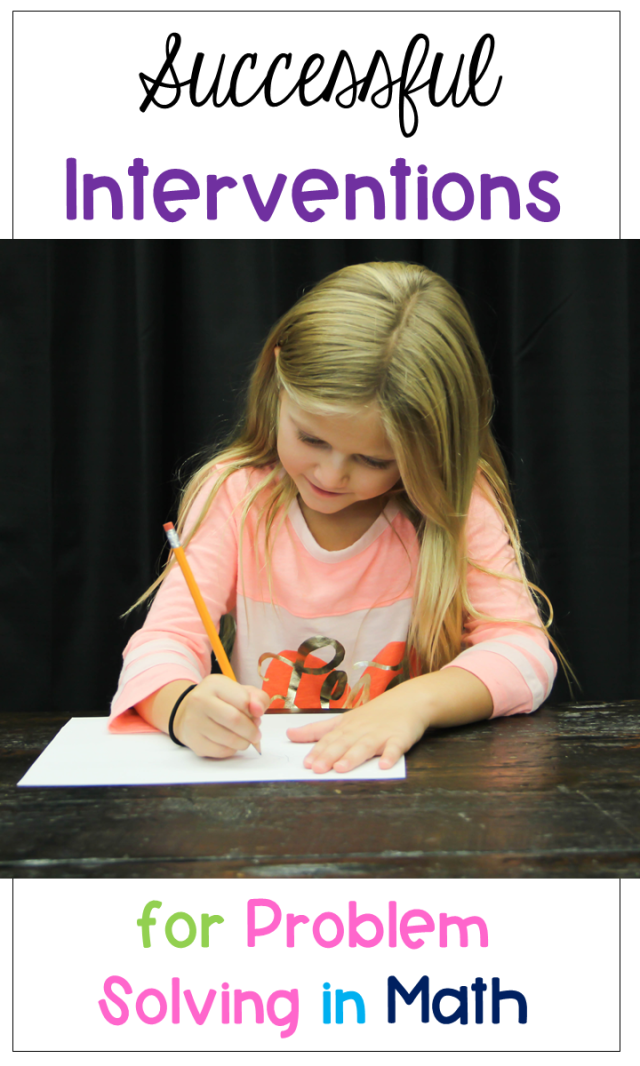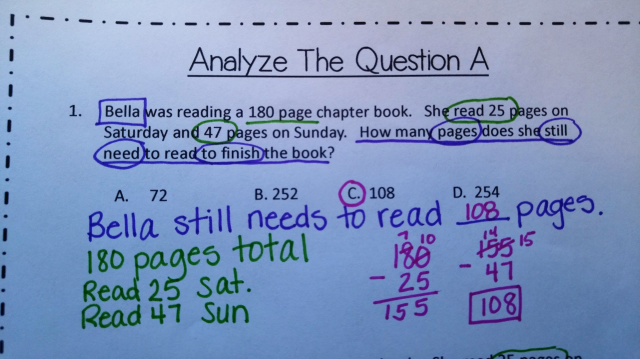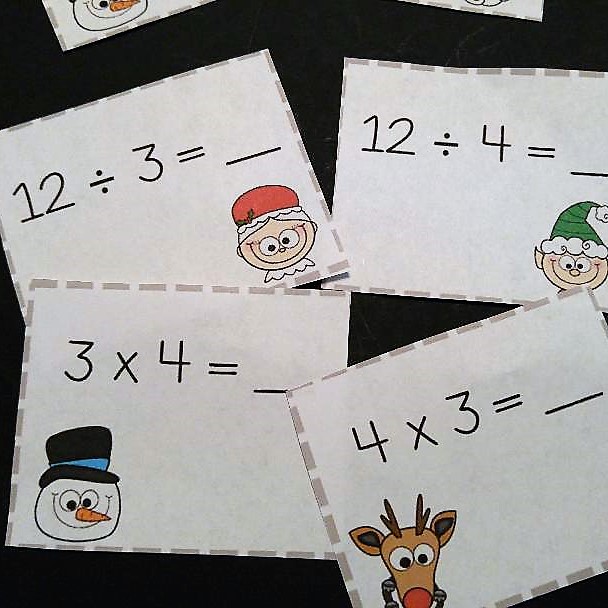
There are many ways to teach problem solving to elementary students. Most students are successful with a well structured problem solving plan. However, we all have at least a few students who just don’t “get it” with regular classroom lessons. Working one on one or in small groups and applying well planned interventions helps these students find success.
My favorite “Go To” intervention strategies are:

Often students read the problem and pick a method to solve without really addressing the question asked. I like to point out to my students which part of a problem is the question and which part is the “story” or “clues”. This helps students to see what part of the problem is telling and which part is asking. I like to use this analogy with my students: “I asked Shelley what color the sky is. She told me the grass is green. Did she lie? No, but did she answer my question? NO” and then relate this to word problems. If you use the clues, but you don’t answer the question, you haven’t solved the problem. One way to make this successful is to give your students a problem without the question, then have the students brainstorm as many different questions they can think of for clues.
Another way to help with this is to give your students 3 problems that share the same clues, but have different questions. This is a good way to show students that they need to analyze the question before they make up their mind about what steps to take. (Click the photo above for a FREE set of analyzing the question word problems).

This helps some students to understand the question better. Look at the example below. After reading the story problem, ask the students to rewrite the question as a sentence with a blank for the answer. Do this before discussing and strategies for solving the problem. The process of rewriting the question as a statement helps students to focus on what is being asked. After solving the problem, have your students place their answer in the blank and read the statement with the number in the blank. Teach them to ask themselves if their answer makes sense in the statement.
 Most word problems follow a standard format with clues first and question last. Some students have trouble filtering the question out of the story. Students that have this problem can benefit from working from the bottom up. Teach them to read the question first (usually at the end) and then read the whole problem to gather clues. I usually save this strategy for students who really need that extra something after trying other interventions. It does not work for everyone, but for some it is the “magic trick” to help them organize the problem. Also, they usually need to do this until they get better at other strategies.
Most word problems follow a standard format with clues first and question last. Some students have trouble filtering the question out of the story. Students that have this problem can benefit from working from the bottom up. Teach them to read the question first (usually at the end) and then read the whole problem to gather clues. I usually save this strategy for students who really need that extra something after trying other interventions. It does not work for everyone, but for some it is the “magic trick” to help them organize the problem. Also, they usually need to do this until they get better at other strategies.
Want more ideas for interventions?
or Visit my Pinterest Board for Problem Solving:























